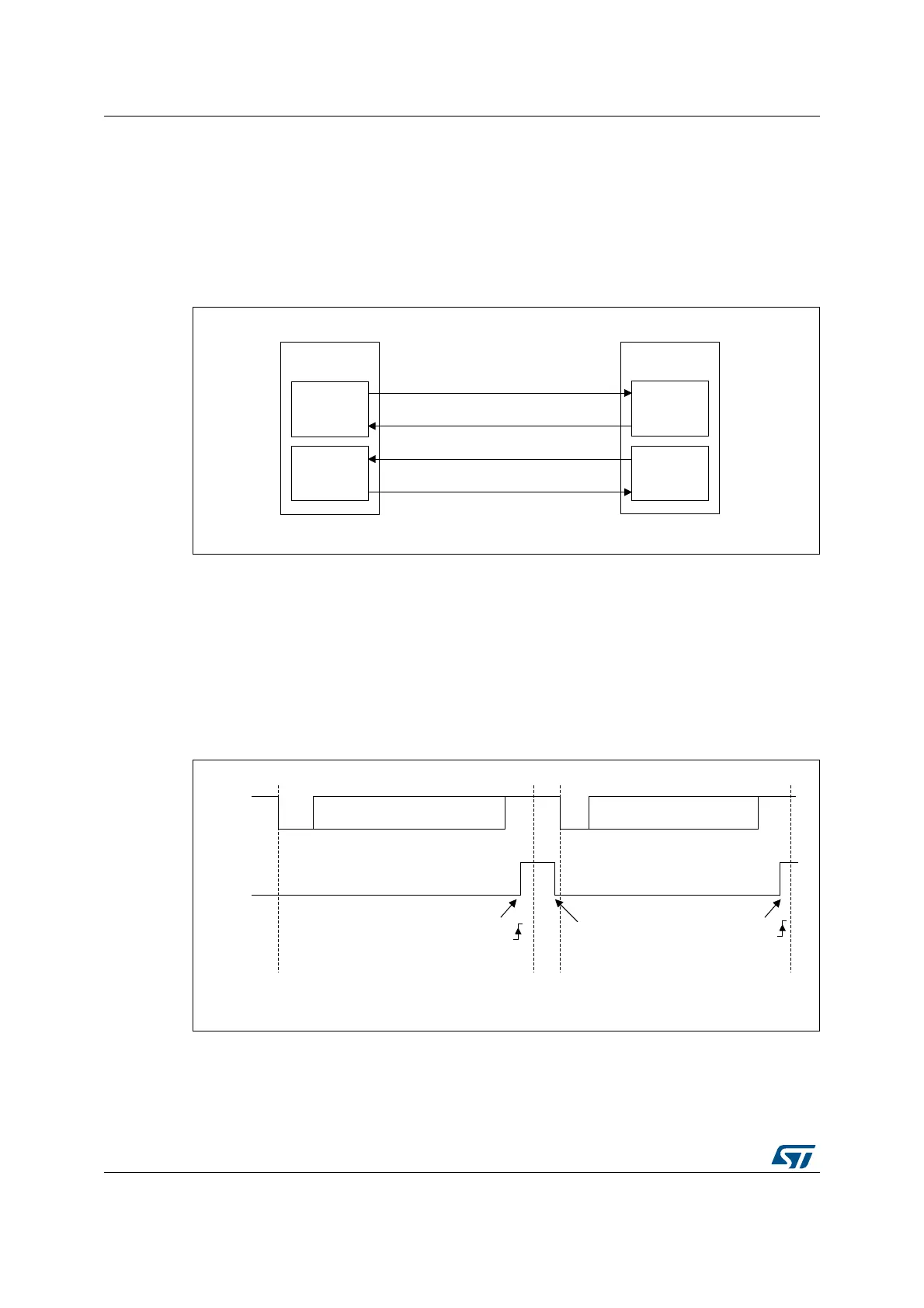Low-power universal asynchronous receiver transmitter (LPUART) RM0440
1702/2126 RM0440 Rev 4
enable bit (EIE bit in the LPUART_CR3 register), which, if set, enables an interrupt after the
current byte if any of these errors occur.
38.4.13 RS232 Hardware flow control and RS485 Driver Enable
It is possible to control the serial data flow between 2 devices by using the nCTS input and
the nRTS output. The Figure 552 shows how to connect 2 devices in this mode:
Figure 566. Hardware flow control between 2 LPUARTs
RS232 RTS and CTS flow control can be enabled independently by writing the RTSE and
CTSE bits respectively to 1 (in the LPUART_CR3 register).
RS232 RTS flow control
If the RTS flow control is enabled (RTSE=1), then nRTS is asserted (tied low) as long as the
LPUART receiver is ready to receive a new data. When the receive register is full, nRTS is
deasserted, indicating that the transmission is expected to stop at the end of the current
frame. Figure 567 shows an example of communication with RTS flow control enabled.
Figure 567. RS232 RTS flow control
Note: When FIFO mode is enabled, nRTS is deasserted only when RXFIFO is full.
MSv31892V2
TX circuit
LPUART 1
TX
RX circuit
RX circuit
LPUART 2
TX circuit
TX
CTS
CTS
RTS
RX
RTS
RX
MSv31168V1
Start
bit
Start
bit
Stop
bit
Idle
Stop
bit
RX
nRTS
Data 1 read
Data 2 can now be transmitted
RXNE
RXNE
Data 1 Data 2

